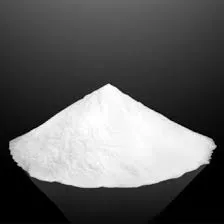
Aug . 20, 2024 10:10 Back to list
Hydroxyethyl Cellulose Production Techniques and Process Overview for Industrial Applications
The Manufacturing Process of Hydroxyethyl Cellulose
Hydroxyethyl cellulose (HEC) is a non-ionic, water-soluble polymer derived from cellulose through a series of chemical modifications. It possesses unique properties that make it a vital component in various industries, including pharmaceuticals, cosmetics, construction, and food. Understanding the manufacturing process of HEC is essential for both manufacturers and end-users, as it highlights the intricacies involved in producing this versatile compound.
Raw Material Selection
The manufacturing process of HEC begins with cellulose, the primary raw material. Cellulose can be sourced from various plant materials, including wood pulp and cotton. The chosen cellulose is first purified to remove any impurities, such as lignin and hemicellulose. This step ensures that the final product has high purity and quality. The purity of the cellulose directly affects the properties of the resulting hydroxyethyl cellulose, making this initial stage crucial.
Etherification Reaction
Once purified cellulose is obtained, the next stage involves the etherification reaction, which is central to the production of HEC. In this process, the purified cellulose is treated with ethylene oxide, a chemical compound that reacts with the hydroxyl groups present in the cellulose structure. This reaction occurs in a controlled environment, often using solvents and catalysts to facilitate the process. The temperature and pressure during this stage are critical parameters, as they directly influence the degree of substitution of the hydroxyethyl groups on the cellulose backbone. An optimized reaction conditions ensure that the HEC produced has the desired viscosity and solubility characteristics.
Control of Degree of Substitution
The degree of substitution (DS) refers to the average number of hydroxyethyl groups substituting the hydroxyl groups in the cellulose. It is a crucial factor that determines the properties of HEC, such as its solubility, thickening power, and rheology. Manufacturers carefully control the conditions of the etherification process to achieve the desired DS, which can range from 0.1 to 2.5. Precise control during this stage ensures consistent performance of the HEC in various applications.
hydroxyethyl cellulose manufacturing process

Purification and Drying
After the etherification reaction is complete, the resulting HEC solution undergoes purification to remove any unreacted chemicals and byproducts. This purification step is generally achieved through precipitation techniques, where the HEC is precipitated using suitable solvents. Following purification, the HEC is dried to eliminate excess moisture, often using hot air or vacuum drying methods. This step is vital for ensuring the stability and shelf life of the final product.
Quality Control
Quality control is a critical phase in the manufacturing process. The dried HEC is tested for various parameters, including viscosity, pH, solubility, and microbial contamination, to ensure it meets industry standards. These tests help guarantee that the produced HEC is of high quality and suitable for its intended application. Manufacturers often adhere to international quality standards, such as ISO and GMP, to ensure the reliability of their products.
Packaging and Distribution
Once the quality checks are passed, the HEC is packaged in appropriate materials that protect it from moisture and contamination during storage and transport. It is essential for manufacturers to provide clear labeling and technical data about the product to inform users of its properties and applications. The final step involves the distribution of HEC to various markets, where it is utilized in formulations ranging from thickening agents in paints to stabilizers in food products.
Conclusion
The manufacturing process of hydroxyethyl cellulose is a complex and meticulously controlled sequence of steps that ensures the production of a high-quality product. From the selection of raw materials to quality control and distribution, each stage plays a critical role in determining the performance and applicability of HEC in diverse industries. As demand for cellulose-based products continues to grow, advancements in manufacturing technologies will likely enhance the efficiency and sustainability of HEC production.
-
Versatile Hpmc Uses in Different Industries
NewsJun.19,2025
-
Redispersible Powder's Role in Enhancing Durability of Construction Products
NewsJun.19,2025
-
Hydroxyethyl Cellulose Applications Driving Green Industrial Processes
NewsJun.19,2025
-
Exploring Different Redispersible Polymer Powder
NewsJun.19,2025
-
Choosing the Right Mortar Bonding Agent
NewsJun.19,2025
-
Applications and Significance of China Hpmc in Modern Industries
NewsJun.19,2025







